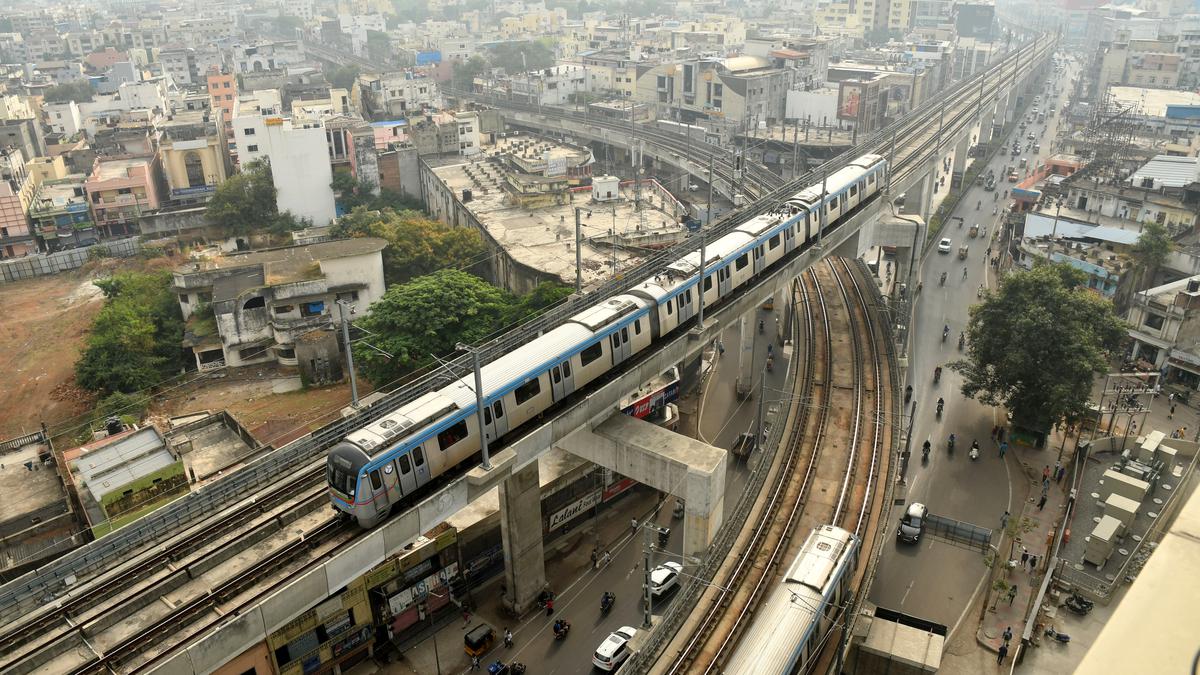
L&T Metro Rail Hyderabad plans to become 100% solar-powered
The Hindu
Hyderabad Metro Rail aims for carbon and water neutrality, utilizing solar power and rainwater harvesting for sustainability and environmental responsibility.
L&T Metro Rail (Hyderabad) Limited (L&TMRHL), which has constructed and is running the Hyderabad Metro Rail (HMR) project, has plans to increase the contribution of solar power to meet 100% of its energy requirements and is committed to achieve carbon neutrality by 2040 and water neutrality by 2035.
It is actively pursuing carbon credit monetisation through the ‘Global Carbon Council’, transforming environmental responsibility into a financially viable model. There is also an aim to achieve platinum certification for all stations from the Indian Green Building Council (IGBC), said chief executive officer and managing director K.V.B. Reddy.
Ever since the project has been commissioned, it has been significantly contributing towards reduction in greenhouse gas emissions. In 2022-23 alone, it has saved an estimated 88 million kilograms of CO2 emissions since 2018, equivalent to planting over 88 million trees.
Using Metro significantly reduces an individual carbon footprint compared to other modes of transport, as a 30 km journey emits 97% less CO2 than a car user and 98% less than a bus passenger, he pointed out.
The project has constructed 155 strategic pits at stations and depots captured to store over 58,600 kilolitres of rainwater annually. This harvested water is being used for various non-potable purposes, reducing dependence on freshwater sources, and promoting water conservation.
L&TMRHL has also installed an 8.35 Mwp captive solar power plant across its depots and rooftops of 28 stations, which generate 10% of the Metro’s total power requirement, reducing reliance on conventional energy sources and further lowering the carbon footprint, he said.
Metro trains and elevators are also equipped with cutting-edge regenerative braking systems, capturing 40% of the used traction energy and feeding it back into the grid. This innovative technology not only reduces energy consumption, but also promotes sustainability by maximizing resource utilisation, said Mr. Reddy.

The Karnataka government has drafted a comprehensive master plan for the integrated development of Kukke Subrahmanya temple, the State’s highest revenue-generating temple managed by the Hindu Religious Institutions and Charitable Endowments Department. The redevelopment initiative is estimated to cost around ₹254 crore and aims to enhance infrastructure and facilities for devotees.












